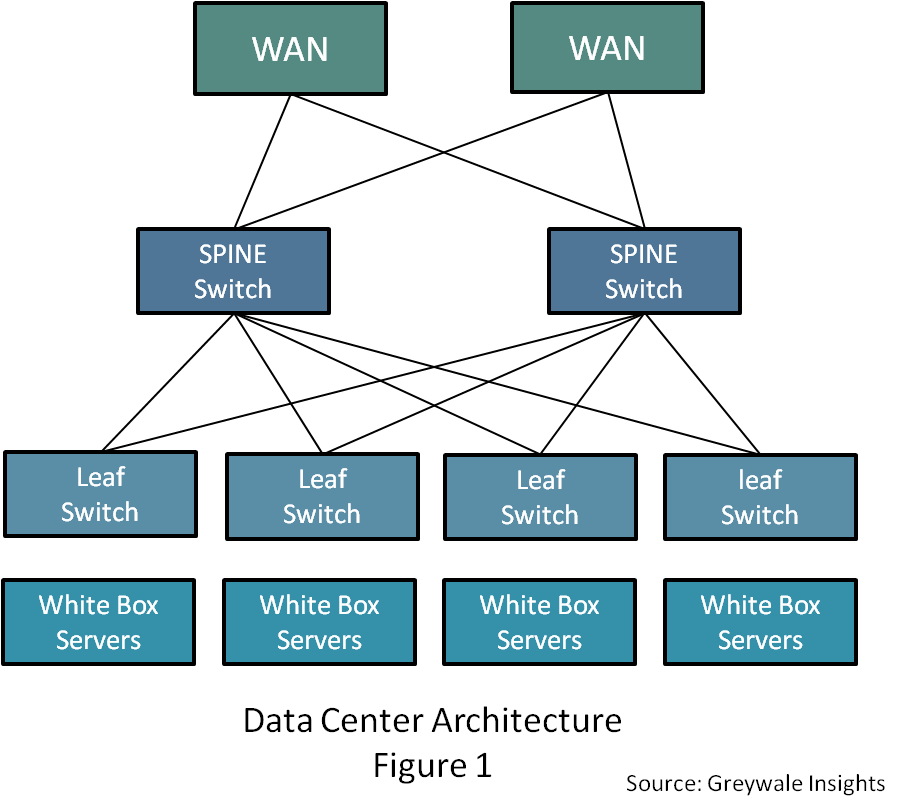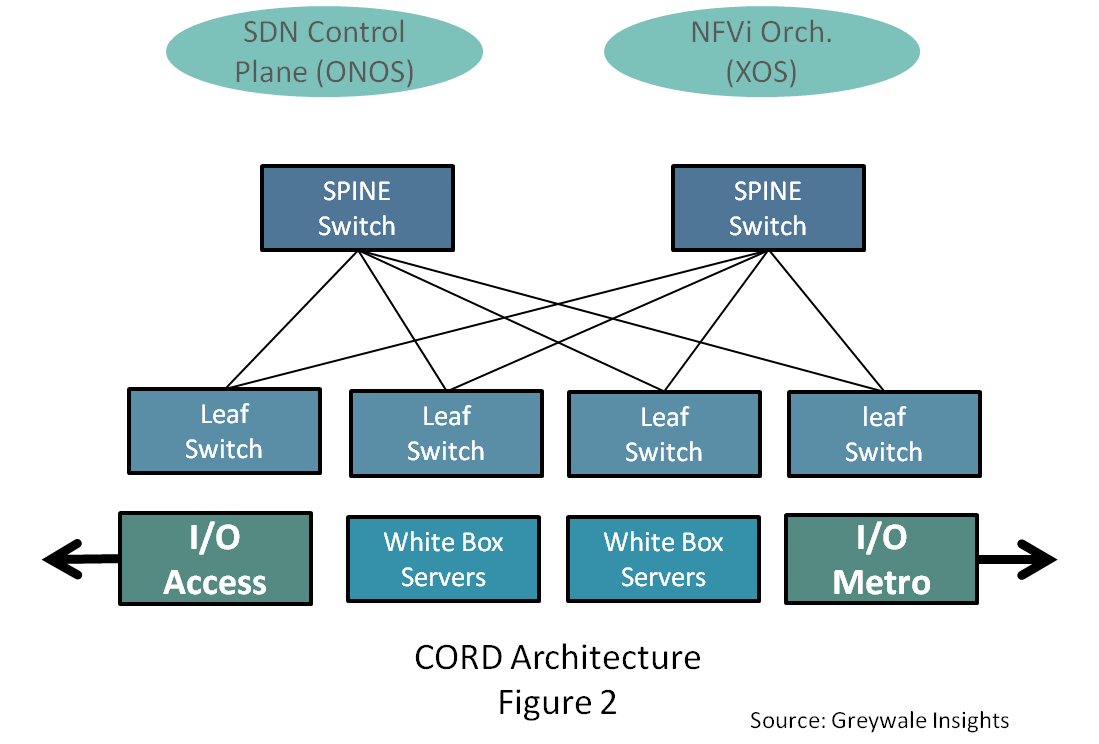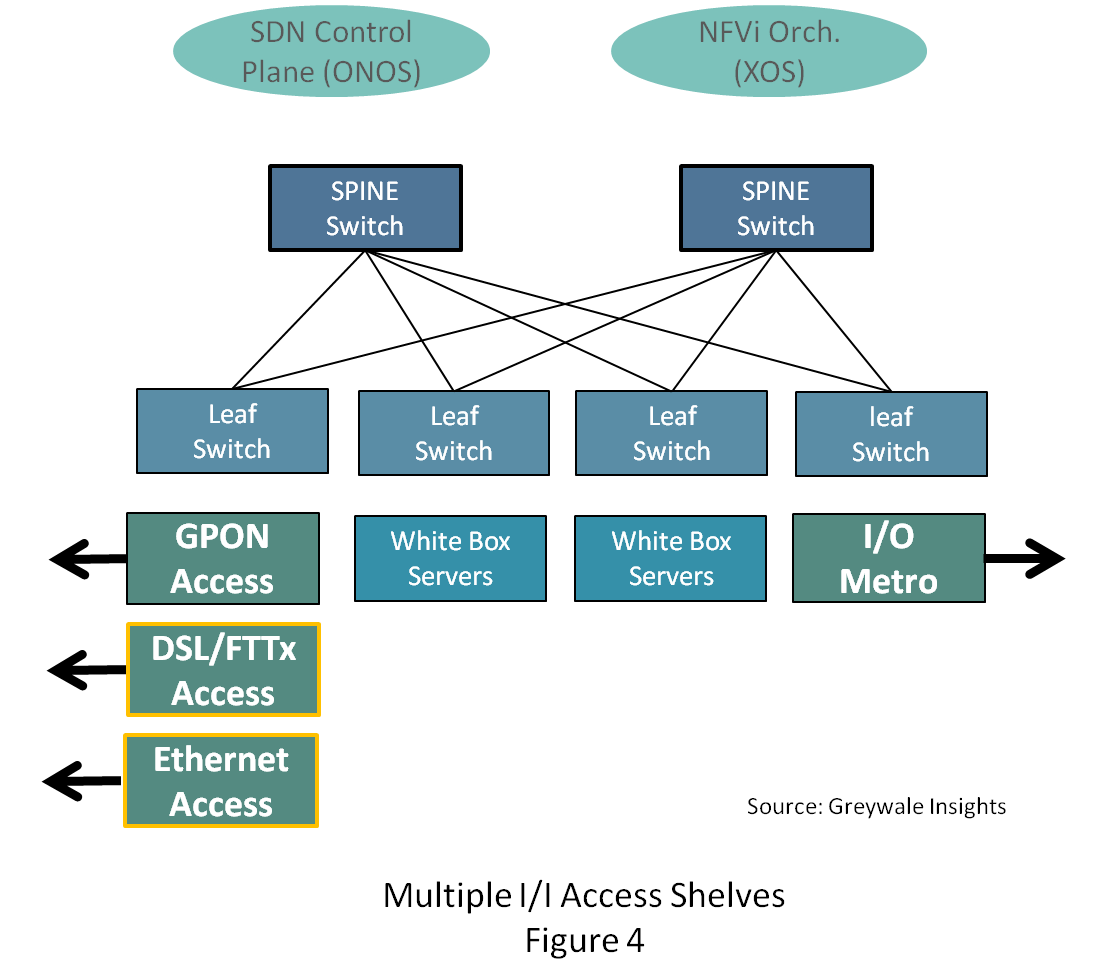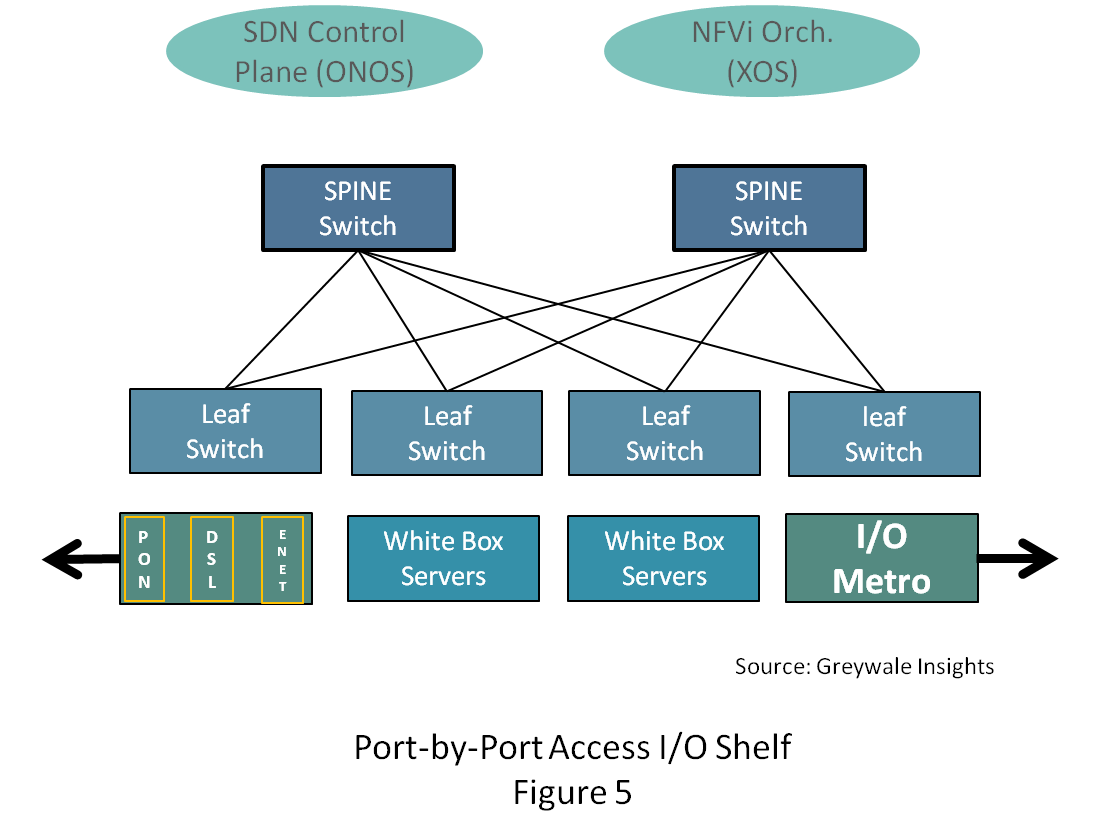The CORD Project, according to ON.Lab, is a vision, an architecture and a reference implementation. It’s also “a concept car” according to Tom Anschutz, distinguished member of tech staff at AT&T. What you see today is only the beginning of a fundamental evolution of the legacy telecommunication central office (CO).
The Central Office Re-architected as a Datacenter (CORD) initiative is the most significant innovation in the access network since the introduction of ADSL in the 1990’s. At the recent inaugural CORD Summit, hosted by Google in Sunnyvale, thought leaders at Google, AT&T, and China Unicom stressed the magnitude of the opportunity CORD provides. CO’s aren’t going away. They are strategically located in nearly every city’s center and “are critical assets for future services,” according to Alan Blackburn, vice president, architecture and planning at AT&T, who spoke at the event.
Service providers often deal with numerous disparate and proprietary solutions. This includes one architecture/infrastructure for each service multiplied by two vendors. The end result is a dozen unique, redundant and closed management and operational systems. CORD is able to solve this primary operational challenge, making it a powerful solution that could lead to an operational expenditures (OPEX) reduction approaching 75 percent from today’s levels.

Economics of the data center
Today, central offices are comprised of multiple disparate architectures, each purpose built, proprietary and inflexible. At a high level there are separate fixed and mobile architectures. Within the fixed area there are separate architectures for each access topology (e.g., xDSL, GPON, Ethernet, XGS-PON etc.) and for wireless there’s legacy 2G/3G and 4G/LTE.
Each of these infrastructures is separate and proprietary, from the CPE devices to the big CO rack-mounted chassis to the OSS/BSS backend management systems. Each of these requires a specialized, trained workforce and unique methods and procedures (M&Ps). This all leads to tremendous redundant and wasteful operational expenses and makes it nearly impossible to add new services without deploying yet another infrastructure.
The CORD Project promises the “Economics of the Data Center” with the “Agility of the Cloud.” To achieve this, a primary component of CORD is the Leaf-Spine switch fabric. (See Figure 1)
The Leaf-Spine Architecture
Connected to the leaf switches are racks of “white box” servers. What’s unique and innovative in CORD are the I/O shelves. Instead of the traditional data center with two redundant WAN ports connecting it to the rest of the world, in CORD there are two “sides” of I/O. One, shown on the right in Figure 2, is the Metro Transport (I/O Metro), connecting each Central Office to the larger regional or large city CO. On the left in the figure is the access network (I/O Access).
To address the access networks of large carriers, CORD has three use cases:

-
R-CORD, or residential CORD, defines the architecture for residential broadband.
-
M-CORD, or mobile CORD, defines the architecture of the RAN and EPC of LTE/5G networks.
-
E-CORD, or Enterprise CORD, defines the architecture of Enterprise services such as E-Line and other Ethernet business services.
There’s also an A-CORD, for Analytics that addresses all three use cases and provides a common analytics framework for a variety of network management and marketing purposes.
Achieving Unified Services
The CORD Project is a vision of the future central office and one can make the leap that a single CORD deployment (racks and bays) could support residential broadband, enterprise services and mobile services. This is the vision. Currently regulatory barriers and the global organizational structure of service providers may hinder this unification, yet the goal is worth considering. One of the keys to each CORD use case, as well as the unified use case, is that of “disaggregation.” Disaggregation takes monolithic chassis-based systems and distributes the functionality throughout the CORD architecture.
Let’s look at R-CORD and the disaggregation of an OLT (Optical Line Terminal), which is a large chassis system installed in CO’s to deploy G-PON. G-PON (Passive Optical Network) is widely deployed for residential broadband and triple play services. It delivers 2 .5 Gbps Downstream, 1.5 Gbps Upstream shared among 32 or 64 homes. This disaggregated OLT is a key component of R-CORD. The disaggregation of other systems is analogous.
To simplify, an OLT is a chassis that has the power supplies, fans and a backplane. The latter is the interconnect technology to send bits and bytes from one card or “blade” to another. The OLT includes two management blades (for 1+1 redundancy), two or more “uplink” blades (Metro I/O) and the rest of the slots filled up with “line cards” (Access I/O). In GPON the line cards have multiple GPON Access ports each supporting 32 or 64 homes. Thus, a single OLT with 1:32 splits can support upwards of 10,000 homes depending on port density (number of ports per blade times the number of blades times 32 homes per port).
Disaggregation maps the physical OLT to the CORD platform. The backplane is replaced by the leaf-spine switch fabric. This fabric “interconnects” the disaggregated blades. The management functions move to ONOS and XOS in the CORD model. The new Metro I/O and Access I/O blades become an integral part of the innovated CORD architecture as they become the I/O shelves of the CORD platform.

This Access I/O blade is also referred to as the GPON OLT MAC and can support 1,536 homes with a 1:32 split (48 ports times 32 homes/port). In addition to the 48 ports of access I/O they support 6 or more 40 Gbps Ethernet ports for connections to the leaf switches.
This is only the beginning and by itself has a strong value proposition for CORD within the service providers. For example, if you have 1,540 homes “all” you have to do is install a 1 U (Rack Unit) shelf. No longer do you have to install another large chassis traditional OLT that supports 10,000 homes.

The New Access I/O Shelf
The access network is by definition a local network and localities vary greatly across regions and in many cases on a neighborhood-by-neighborhood basis. Thus, it’s common for an access network or broadband network operator to have multiple access network architectures. Most ILECs leveraged their telephone era twisted pair copper cables that connected practically every building in their operating area to offer some form of DSL service. Located nearby (maybe) in the CO from the OLT are the racks and bays of DSLAMs/Access Concentrators and FTTx chassis (Fiber to the: curb, pedestal, building, remote, etc). Keep in mind that each of the DSL equipment has its unique management systems, spares, Method & Procedures (M&P) et al.
With the CORD architecture to support DSL-based services, one only has to develop a new I/O shelf. The rest of the system is the same. Now, both your GPON infrastructure and DSL/FTTx infrastructures “look” like a single system from a management perspective. You can offer the same service bundles (with obvious limits) to your entire footprint. After the packets from the home leave the I/O shelf they are “packets” and can leverage the unified VNF’s and backend infrastructures.
At the inaugural CORD SUMMIT, (July 29, 2016, in Sunnyvale, CA) the R-CORD working group added G.Fast, EPON, XG & XGS PON and DOCSIS. (NG PON 2 is supported with Optical inside plant). Each of these access technologies represents an Access I/O shelf in the CORD architecture. The rest of the system is the same!
Since CORD is a “concept car,” one can envision even finer granularity. Driven by Moore’s Law and focused R&D investments, it’s plausible that each of the 48 ports on the I/O shelf could be defined simply by downloading software and connecting the specific Small Form-factor pluggable (SFP) optical transceiver. This is big. If an SP wanted to upgrade a port servicing 32 homes from GPON to XGS PON (10 Gbps symmetrical) they could literally download new software and change the SFP and go. Ideally as well, they could ship a consumer self-installable CPE device and upgrade their services in minutes. Without a truck roll!

Think of the alternative: Qualify the XGS-PON OLTs and CPE, Lab Test, Field Test, create new M&P’s and train the workforce and engineer the backend integration which could include yet another isolated management system. With CORD, you qualify the software/SFP and CPE, the rest of your infrastructure and operations are the same!
This port-by-port granularity also benefits smaller CO’s and smaller SPs. In large metropolitan CO’s a shelf-by-shelf partitioning (One shelf for GPON, One shelf of xDSL, etc) may be acceptable. However, for these smaller CO’s and smaller service providers this port-by-port granularity will reduce both CAPEX and OPEX by enabling them to grow capacity to better match growing demand.
CORD can truly change the economics of the central office. Here, we looked at one aspect of the architecture namely the Access I/O shelf. With the simplification of both deployment and ongoing operations combined with the rest of the CORD architecture the 75 percent reduction in OPEX is a viable goal for service providers of all sizes.





